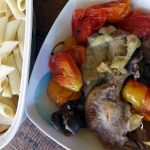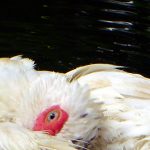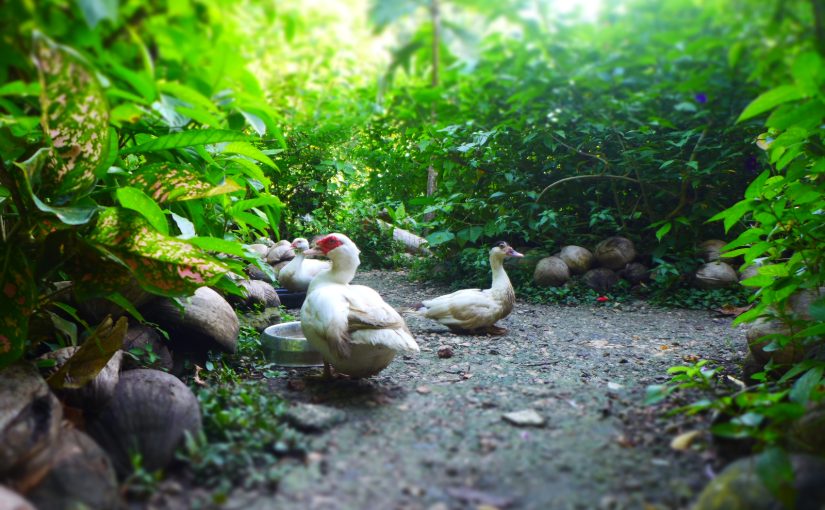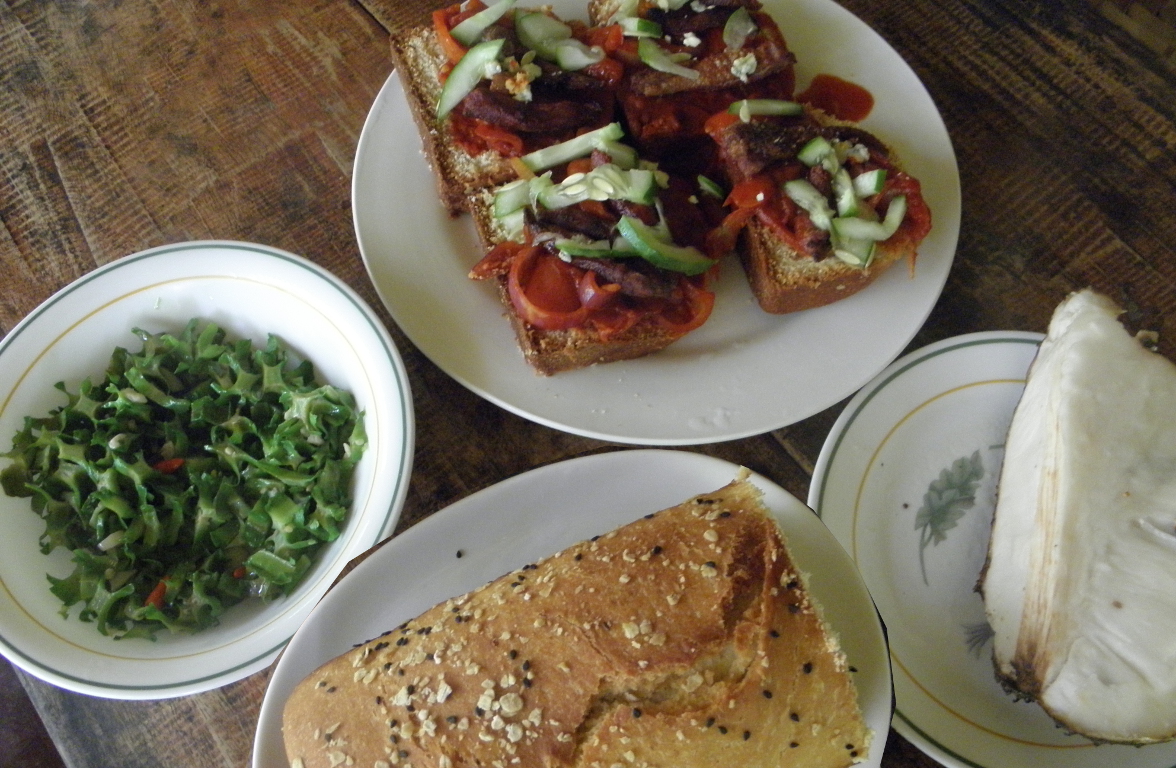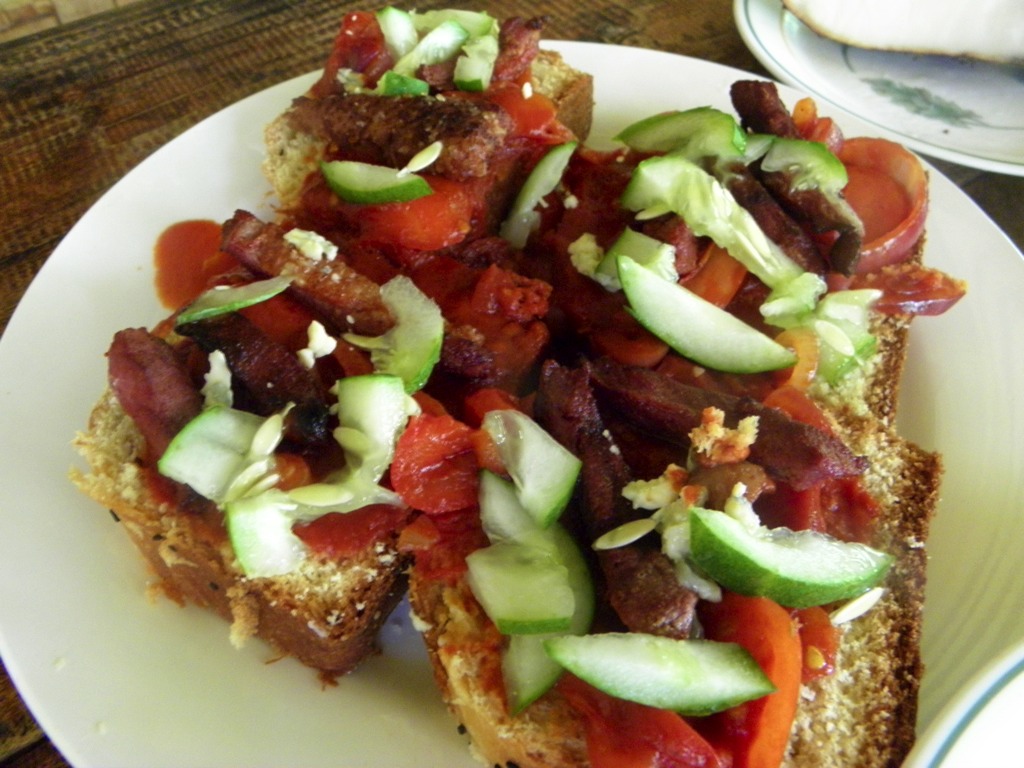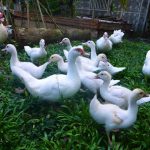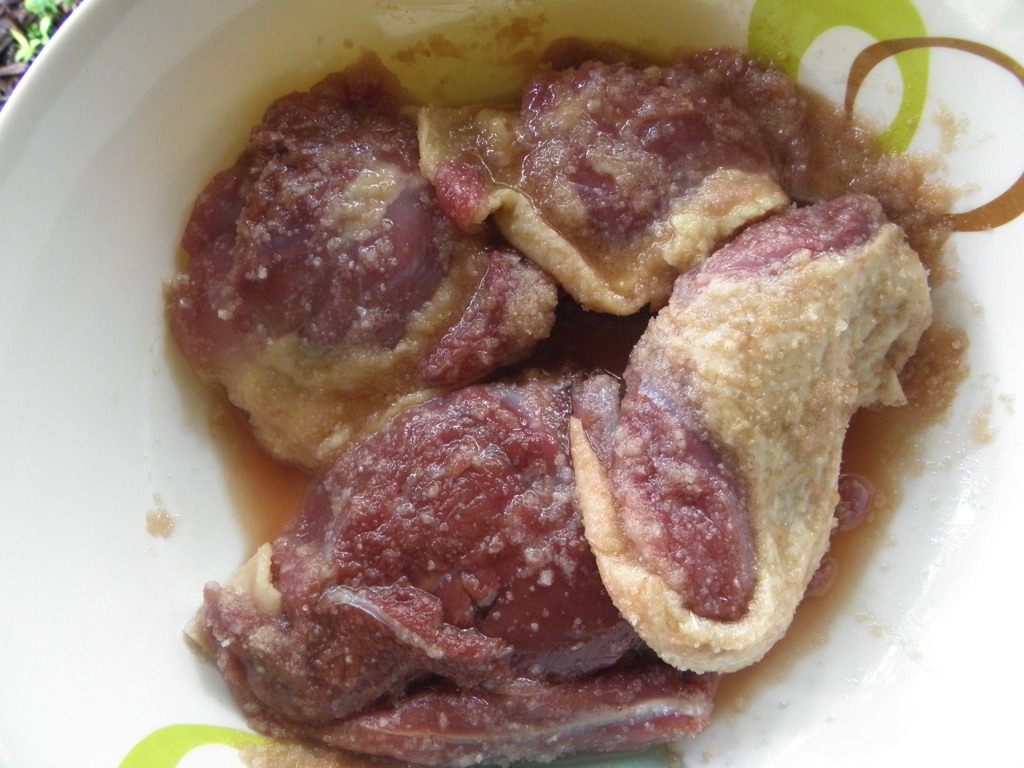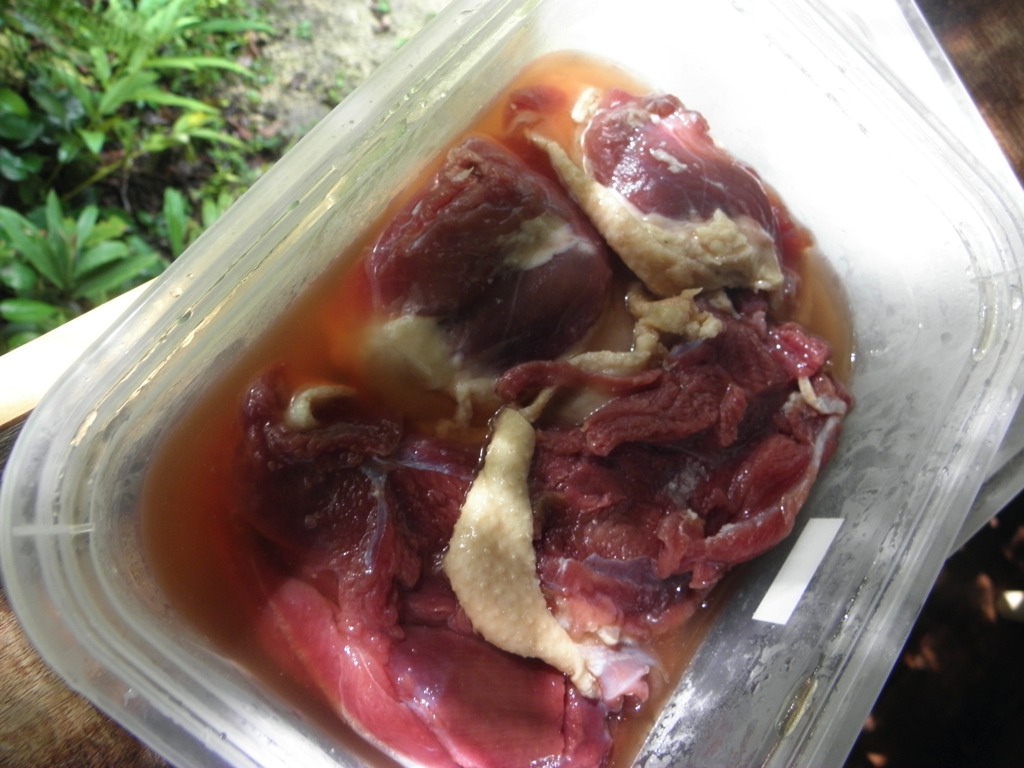Since butchering 8 ducks two weeks ago, I’ve been able to explore more duck dishes, certainly, finding the best and most convenient way of cooking duck. Since being busy with sow Number 1 and her piglets, I don’t really have the time to prepare and cook complicated duck dishes.
The most convenient way to keep duck is by cooking and preserving it in oil. The French call it “confit.” Here, the duck fat is rendered and this fat is used to cook and preserve the duck. If not enough fat is produced, it is acceptable to use suitable cooking oil.
The process of making duck confit involves salting the duck with salt and a variety of herbs, keeping that overnight or so, then cooking in oil. In my case, not having the leisure of such preparations, I simply cut up the duck and put it in a pot of coconut oil.
A small amount of aromatic herb is placed in the oil — some thyme, star anise and a bit of laurel leaf. A bit of salt and pepper. And that’s it — the pot is heated up every now and then over the next couple of weeks, adding new duck in as the pot is emptied, keeping the oil and adding extra oil if necessary.
The best thing about this method is that you can take out a bit of duck meat and prepare that in any way you wish. Because the duck has been cooked in oil until tender, it doesn’t take much time to whip out a duck dish.
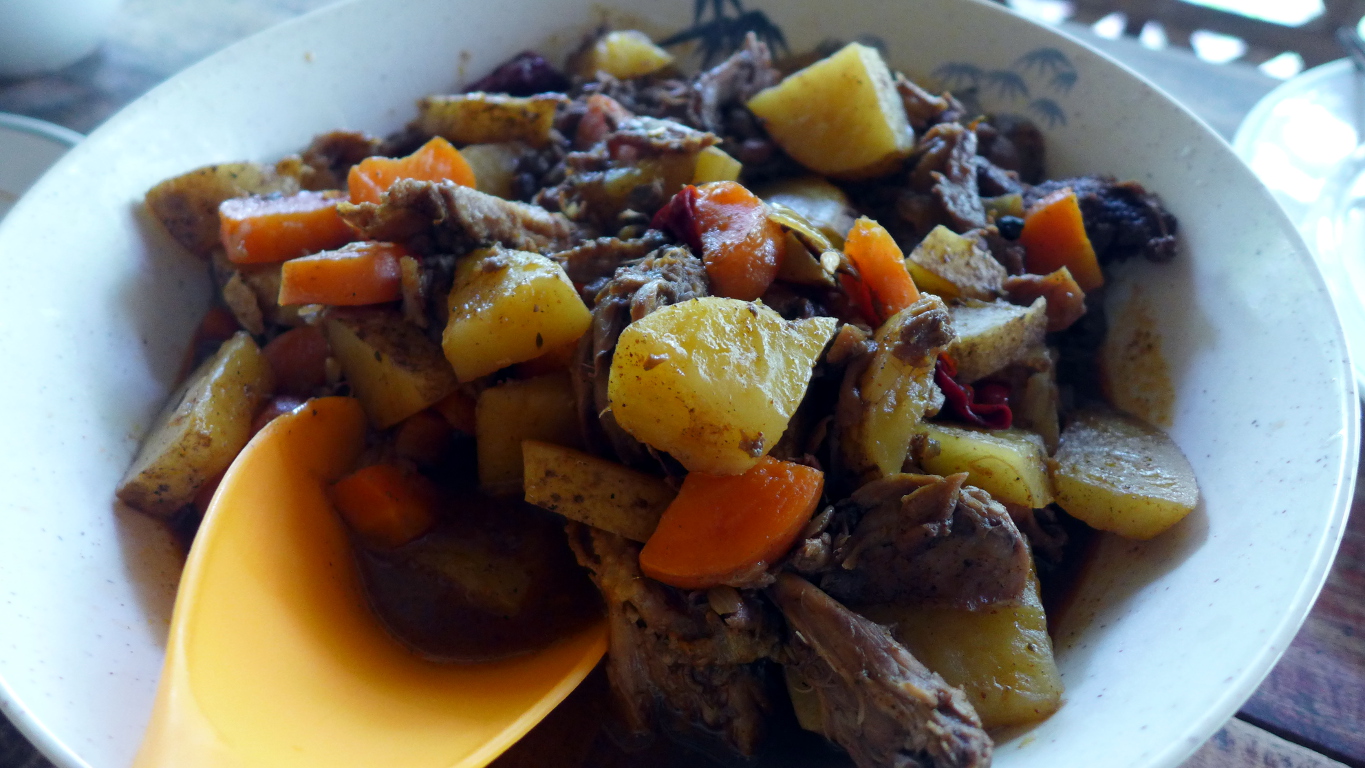
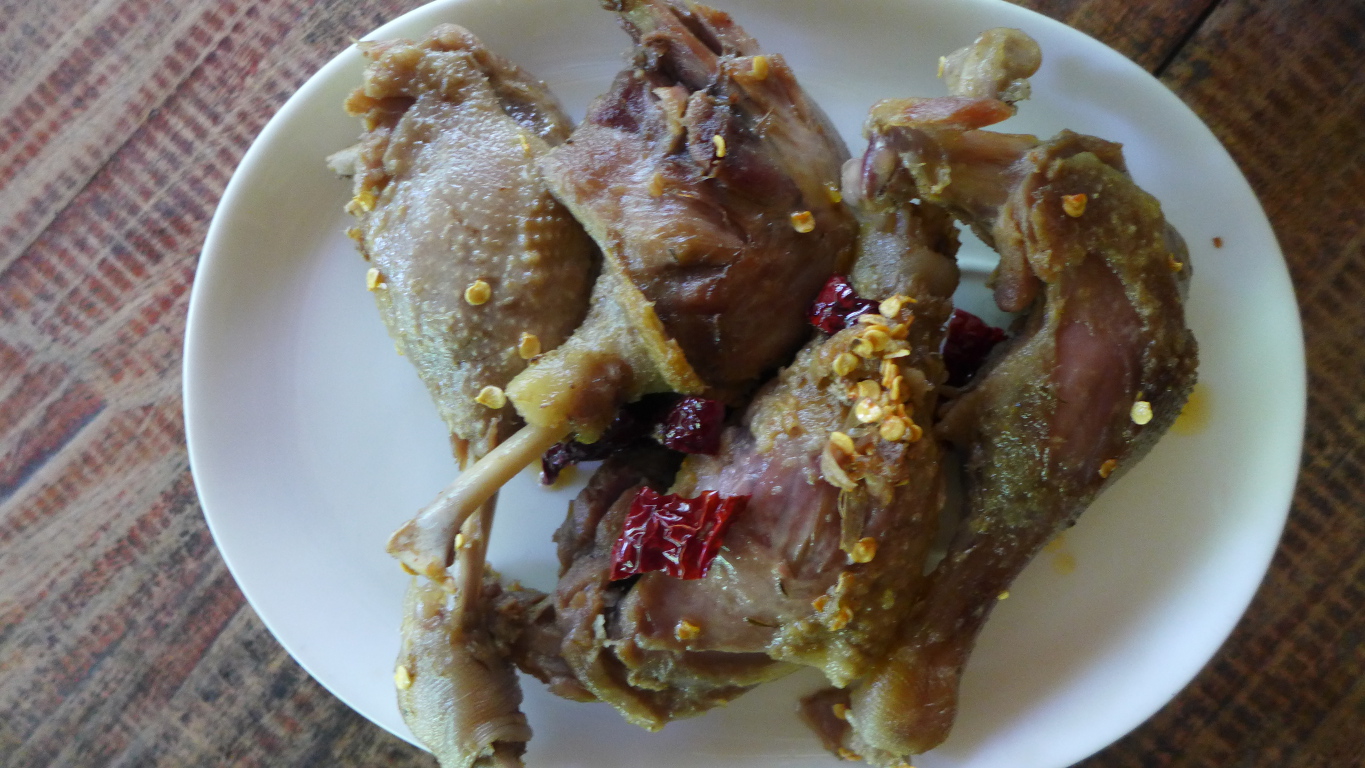
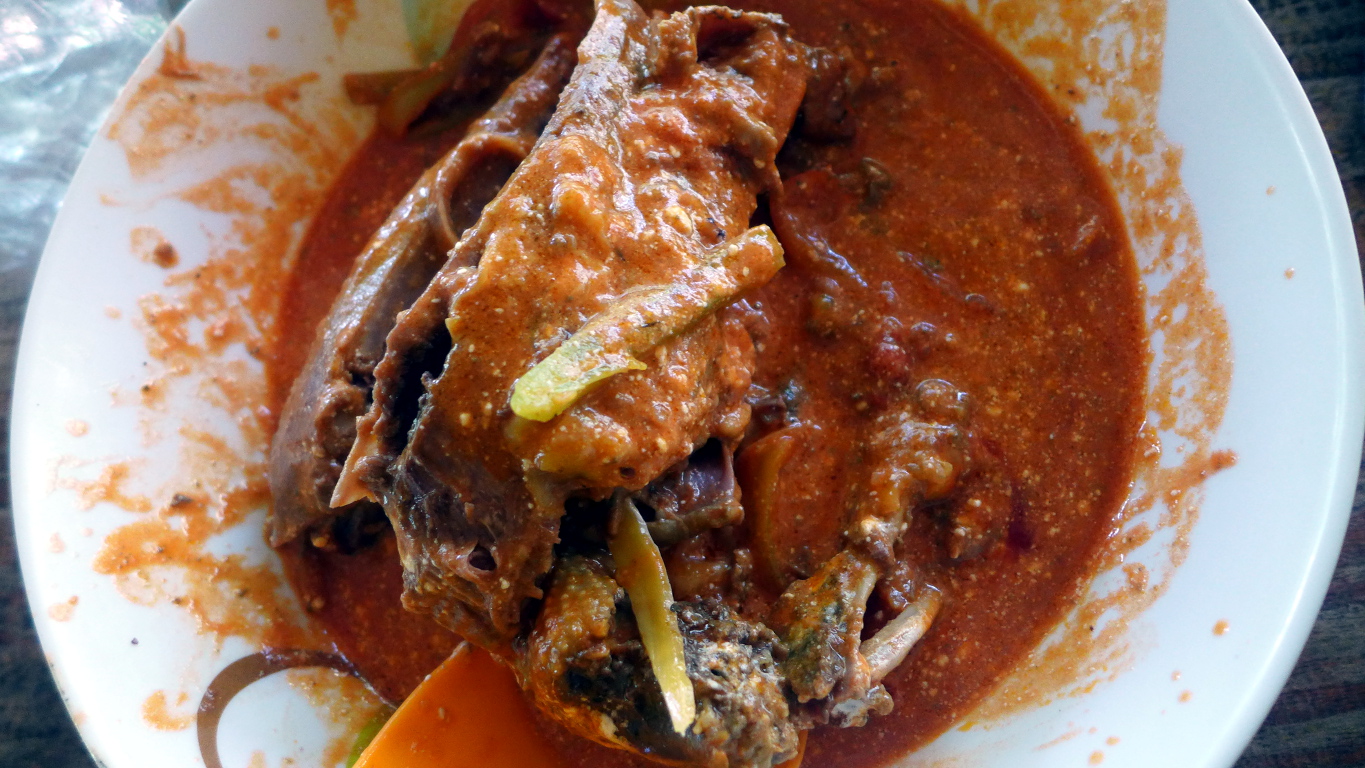
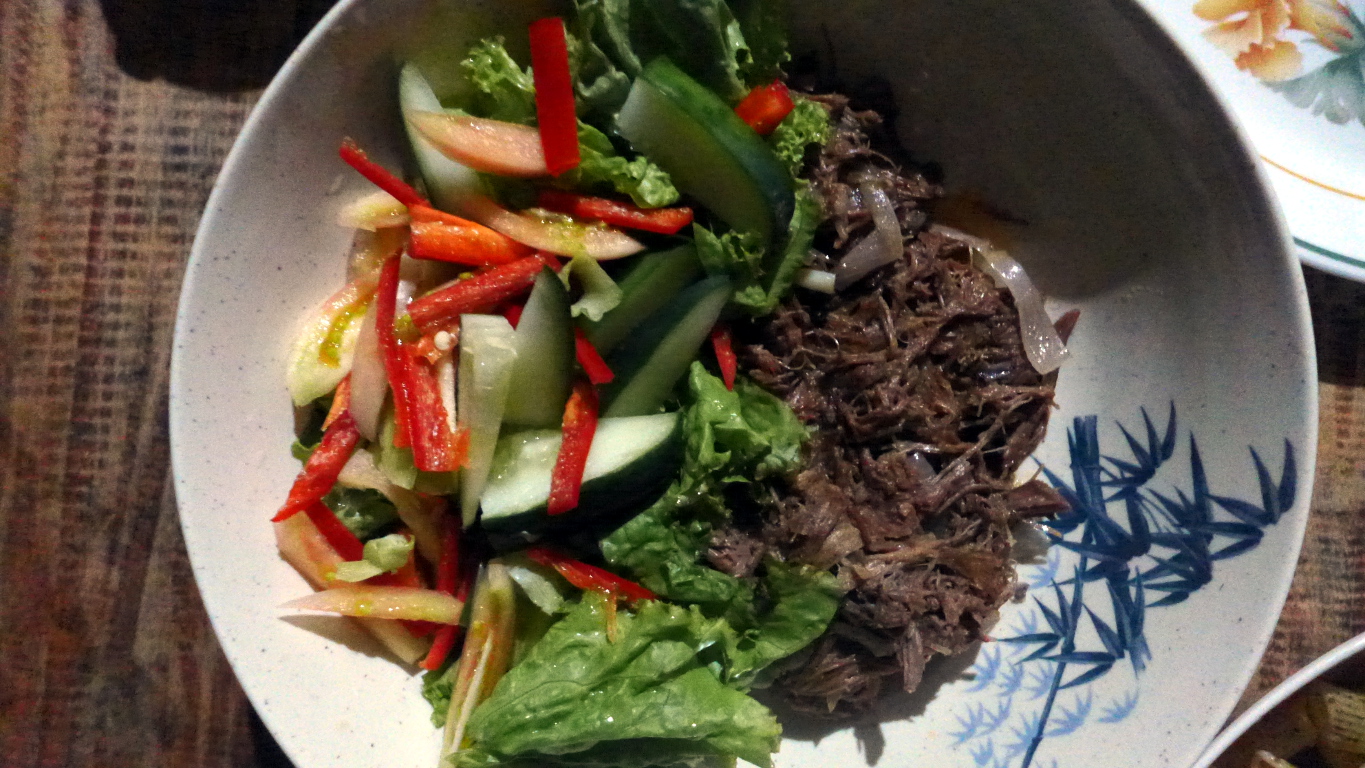

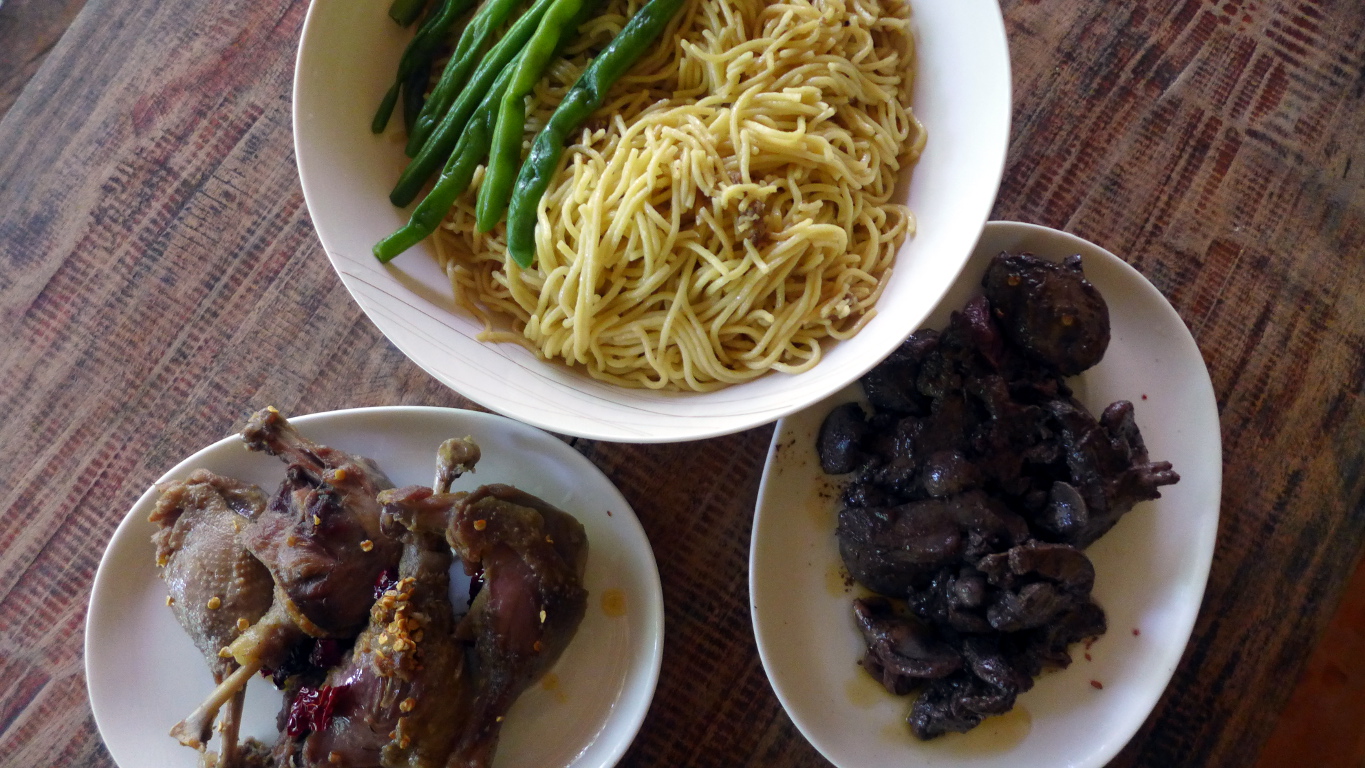
Some of the dishes I’ve prepared are these (see photos). The easiest is to get some duck legs or breast and braise that in oil, tomatoes, salt and pepper, or some kashmir chilies. I have also made duck stew with vegetables which has a brown duck sauce base and some potatoes and carrots. Here, the duck meat can be shreds of meat off the backbone, wings and neck.
One of my favourite experiments is “corned duck.” I love corned beef and I really just had to create that same taste and texture with duck meat. I selected duck breast now truly tender from cooking in oil. This meat is flaked and set aside. Next is chop up some onions which will be browned in oil to caramelise. You can add garlic here if you wish. Next, the shredded duck breast is added together with salt, pepper, a bit of sage, a bit of allspice powder and star anise. The result is absolutely fantastic. Duck meat resembles beef and using shredded duck meat with spices commonly used in corned beef or salted beef preparations produce such a remarkable dish. I love the long shreds of duck meat! I only regret that I didn’t have enough duck fat to add to this!
Other ways of cooking duck I’ve tried are: duck curry, duck noodle soup and duck spring rolls. All coming from a pot of duck confit!
So there — over the last 2 weeks we’ve cooked and consumed 4 ducks and served guests as well. We still have 4 more ducks to go and I don’t get tired of eating duck because it can be prepared in a variety of ways. Bon appétit!


